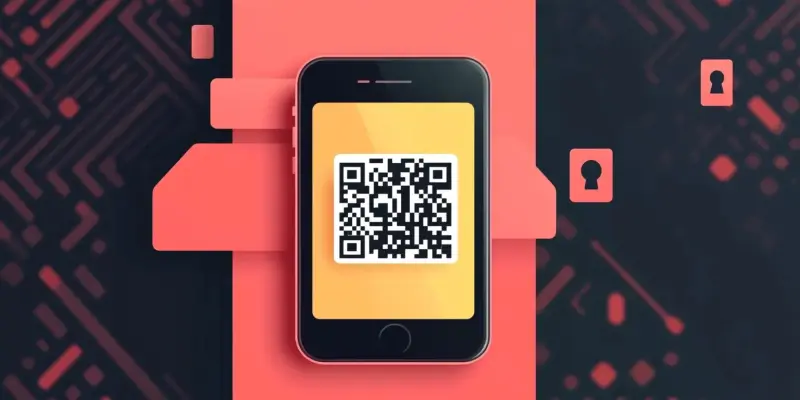As the world increasingly leans towards digital solutions for everyday tasks, QR codes have surged in popularity due to their convenience and contactless nature. This trend has been especially prominent during the COVID-19 pandemic, with QR codes becoming a common tool for everything from accessing restaurant menus to making payments and checking in at events. However, with this rise in usage comes a significant increase in security risks, particularly concerning the inability of users to verify the source of a QR code before scanning it. Scammers exploit this vulnerability by embedding malicious links or malware within QR codes, resulting in a dangerous form of phishing attack known as quishing.
The Dangers of Quishing Attacks
Quishing is a specific type of phishing attack where cybercriminals embed malicious URLs into QR codes, directing unsuspecting users to fraudulent websites upon scanning. Recent trends indicate that these scams are growing more sophisticated, with cybercriminals tampering with physical QR codes in public spaces by covering legitimate codes with their malicious versions. For example, in the UK, fake QR code stickers at parking meters tricked motorists into compromising their payment card credentials. This situation highlights the deceptive nature of quishing attacks and the importance of user vigilance.
The deceptive simplicity of QR codes makes them an ideal tool for scammers. When a user scans a QR code, they typically cannot see the URL to which they are being directed, which can lead to malicious websites designed to harvest sensitive information such as login details, payment information, or personal data. The catastrophic potential of quishing is significant, and without proper vigilance, users can easily fall prey to these scams. Consequently, it is crucial to educate users about the potential risks and equip them with the knowledge needed to identify and avoid such threats.
Mitigation Strategies for Individuals
To protect themselves from the threats posed by quishing attacks, individuals must adopt a cautious approach when dealing with QR codes, particularly those found in public places or received through unsolicited communications. Users should avoid entering sensitive information on websites accessed via QR codes unless they are absolutely certain of their legitimacy. Additionally, it is essential to be vigilant for signs of tampering, such as stickers or overlays on QR codes, which could indicate that a legitimate code has been replaced with a malicious one.
For an added layer of security, users can also opt to manually enter URLs into their browsers instead of scanning QR codes, especially if the website address is short and straightforward. Security apps that can analyze QR codes before redirecting users to potentially harmful websites are also valuable tools. These applications can help identify malicious links embedded within QR codes, providing users with a warning before they visit a compromised site. By staying aware and incorporating these practices, individuals can significantly reduce the risk of falling victim to quishing attacks.
Recommendations for Businesses
Businesses, too, must take proactive measures to enhance the security of QR codes they provide to customers. Utilizing dynamic QR codes that have expiration dates can prevent long-term exploitation, making it harder for attackers to use the same code for malicious purposes over an extended period. Additionally, businesses should consider using URL shorteners with verification features, ensuring that the redirected URLs remain legitimate and trustworthy.
Monitoring scan activities allows businesses to detect unusual patterns that may indicate a security breach. Incorporating unique security markers such as logos or watermarks into QR codes can help users identify authentic codes at a glance. Furthermore, employing QR code scanners equipped with security features and web-based link checkers like VirusTotal can detect and neutralize threats proactively. These measures, combined with ongoing staff training and awareness programs, can create a safer digital environment for both businesses and their customers.
Emphasizing Vigilance and Proactive Measures
With the world increasingly turning to digital solutions for everyday tasks, QR codes have become exceptionally popular due to their convenience and touchless functionality. This surge in usage has been particularly noticeable during the COVID-19 pandemic. QR codes have become a common tool for various activities, such as accessing restaurant menus, making payments, and checking in at events. However, this rise in popularity has also led to a significant increase in security risks. A major concern is users’ inability to verify the source of a QR code before scanning. Scammers exploit this vulnerability by embedding malicious links or malware in QR codes, leading to a dangerous form of phishing known as quishing. This type of attack can result in compromised personal information or financial loss. To safeguard against these threats, users should be cautious, avoiding unknown QR codes and verifying them through official channels when possible, thus balancing the convenience of QR codes with necessary security measures.

